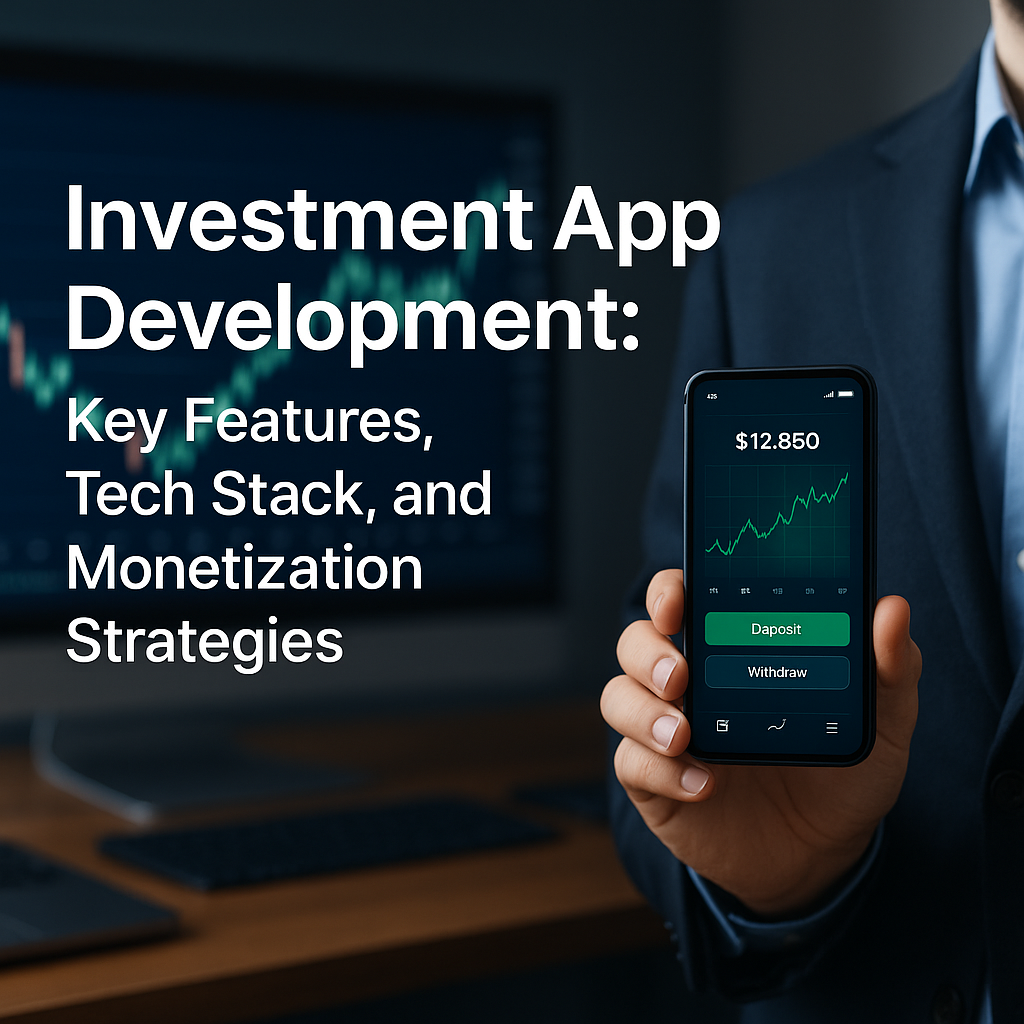In recent years, digital investing has surged in popularity, driven by the rise of fintech innovations and an increasingly mobile-first generation of investors. Whether users manage a portfolio of stocks, ETFs, or cryptocurrencies, they now expect sleek, powerful, and secure apps that make investing accessible and intuitive. Building robust fintech app solutions with the right functionality and business model is crucial for startups and businesses entering this market.
This article outlines the essential investment platform features, ideal tech stack, and proven monetization strategies to help you launch and scale your investment app successfully.
Why Invest in Investment App Development?
Investment apps are no longer just for seasoned traders. They have become everyday financial tools for millennials, Gen Z, and even first-time investors. By offering real-time access to financial markets and data-rich dashboards, investment apps are empowering users to take control of their financial futures.
From a business standpoint, investment apps offer long-term customer engagement, high retention rates, and multiple revenue streams. With growing demand for digital-first financial services, there’s a lucrative opportunity to build scalable fintech app solutions that cater to both novice and experienced investors.
Must-Have Investment Platform Features
To build a competitive and user-friendly investment app, you must include a set of core features that deliver real value while ensuring compliance and security. Here are the top investment platform features your app should have:
-
User Registration and Onboarding
Simplify the sign-up process with secure user authentication and a mobile-friendly UI. Integrate Know Your Customer (KYC) and Anti-Money Laundering (AML) checks to comply with financial regulations.
-
Portfolio Dashboard
Allow users to view their asset allocation, investment performance, total value, and risk levels—all in one place. Visual elements like charts and graphs make data more digestible and user-friendly.
-
Trading and Transaction Module
Enable real-time buying, selling, and order tracking for stocks, ETFs, or cryptocurrencies. Users should be able to place different types of orders (market, limit, stop-loss) seamlessly.
-
Bank Integration and Payments
Allow users to link their bank accounts, fund their investment wallets, and withdraw returns securely. Integrate payment gateways and use encryption to safeguard financial data.
-
Live Market Data and News Feed
Access to real-time financial data, company news, and market analytics empowers users to make informed investment decisions.
-
Notifications and Alerts
Push alerts for stock price changes, portfolio updates, market news, and trade confirmations help users stay engaged and in control.
-
Watchlist and Search Tools
Let users add stocks or assets to a watchlist and search markets using filters based on sector, price range, market cap, or technical indicators.
-
Educational Content
Offer in-app learning modules, glossaries, and tutorials to guide first-time investors and improve financial literacy.
-
Security and Compliance
Implement multi-factor authentication (MFA), data encryption, session management, and audit trails to protect user data and ensure regulatory compliance.
Ideal Tech Stack for Fintech App Solutions
To deliver a responsive, secure, and scalable experience, choosing the right technology stack is critical. Here’s a recommended tech stack for investment app development:
Frontend:
- React Native or Flutter – Build cross-platform mobile apps for iOS and Android from a single codebase.
- Redux / Bloc – For state management and better UI responsiveness.
Backend:
- Node.js – Scalable and efficient for real-time data handling.
- Python (Django/Flask) – Ideal for financial calculations and data processing.
- Java / Kotlin – For more complex enterprise-level solutions.
Database:
- PostgreSQL or MongoDB – Secure, flexible, and scalable storage for user data, trades, and history.
APIs and Integrations:
- Alpaca, IEX Cloud, or Polygon.io – Real-time stock and financial data.
- Plaid or Yodlee – Bank account integration.
- Twilio or Firebase – SMS/email authentication and push notifications.
Security Tools:
- JWT / OAuth 2.0 – For secure user authentication.
- SSL Encryption – To secure data transmission.
- Tokenization and Data Masking – To protect sensitive data.
Investing in cybersecurity protocols from the ground up ensures that your fintech app solutions are trusted by users and compliant with regulations like PCI-DSS, GDPR, or FINRA.
Final Thoughts
Developing a powerful investment app involves more than just clean code—it requires a deep understanding of market expectations, regulatory demands, and user behavior. By combining essential investment platform features with the right tech stack and monetization plan, you can create fintech app solutions that are scalable, secure, and profitable.
Whether you’re targeting beginner investors, experienced traders, or a niche financial audience, the time to invest in investment app development is now. Prioritize usability, trust, and adaptability to position your app as a go-to tool in the fast-evolving digital finance space.









